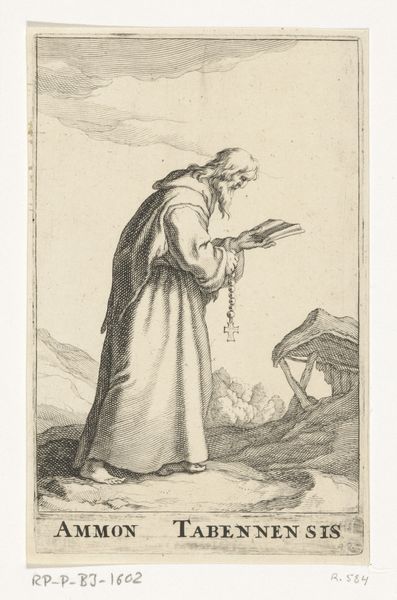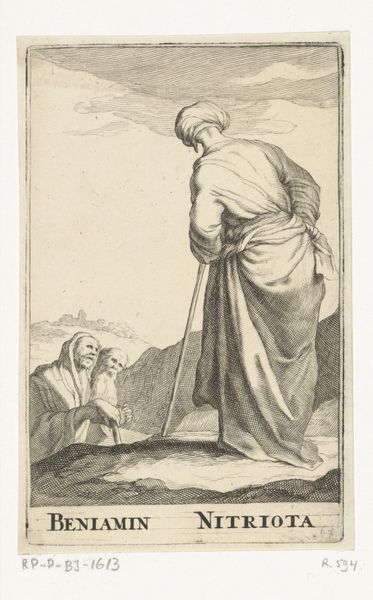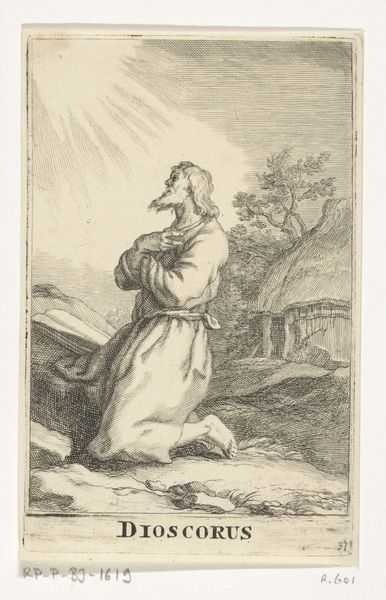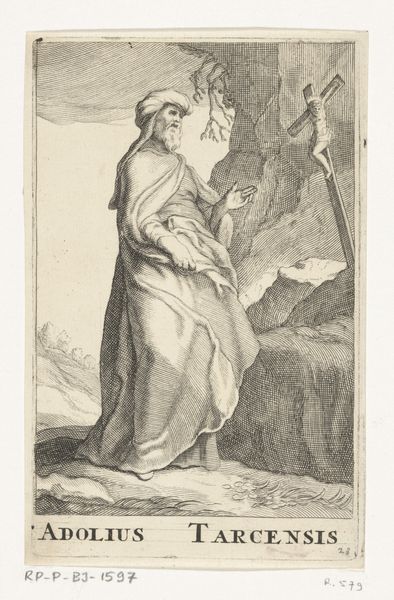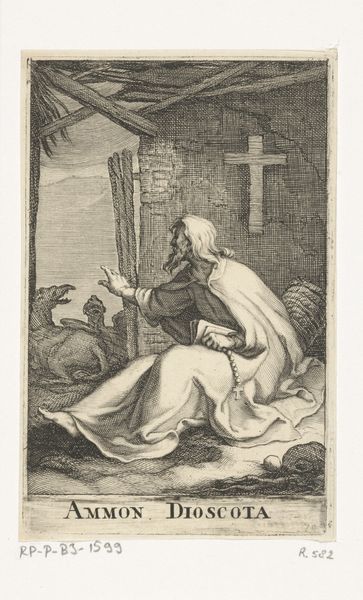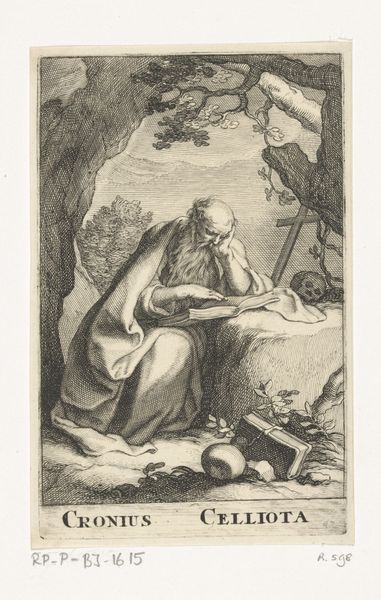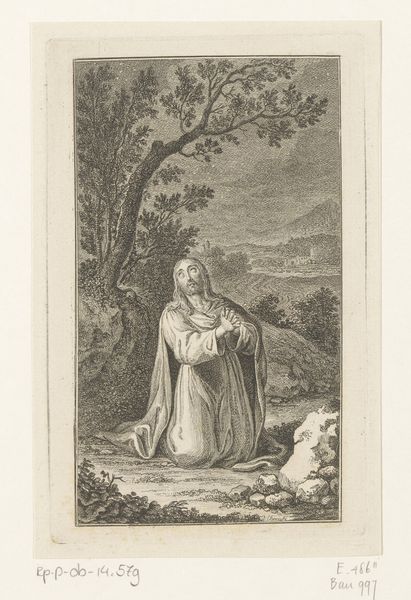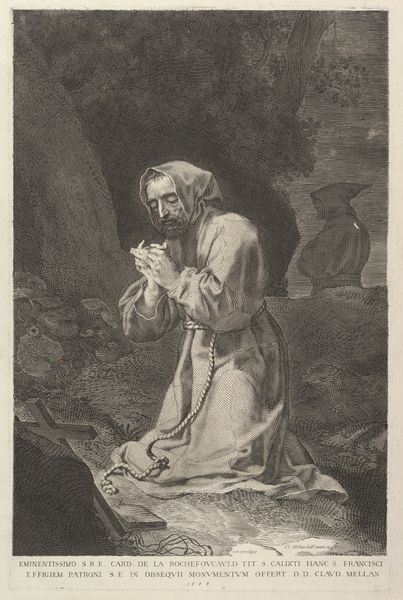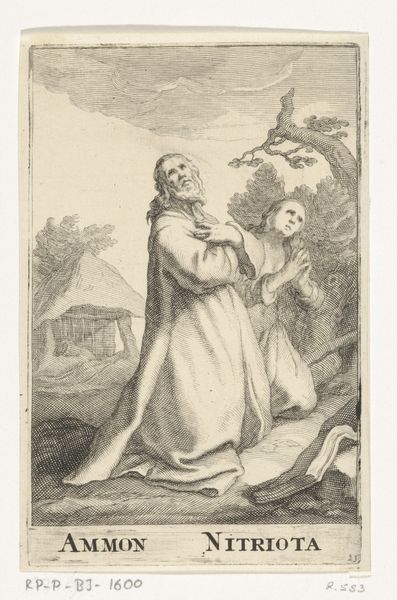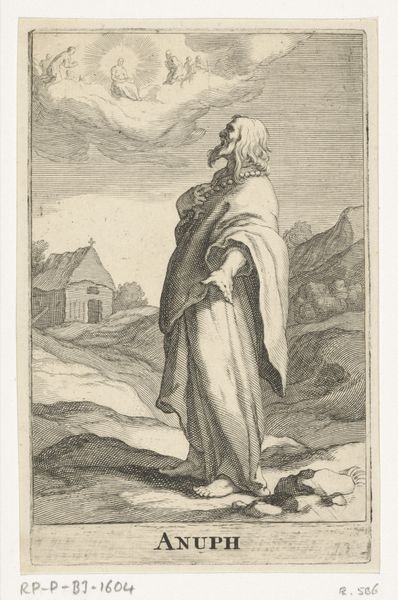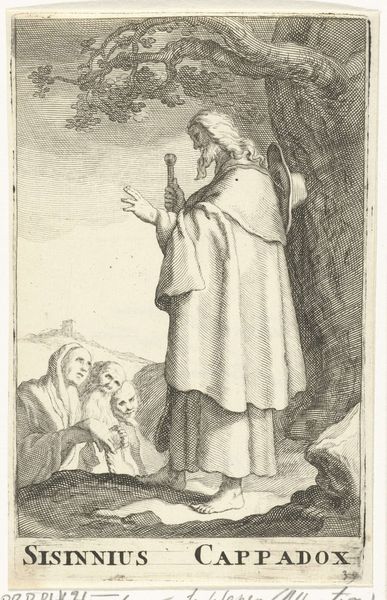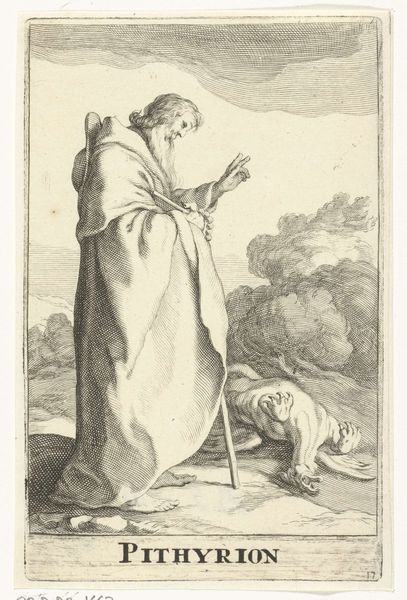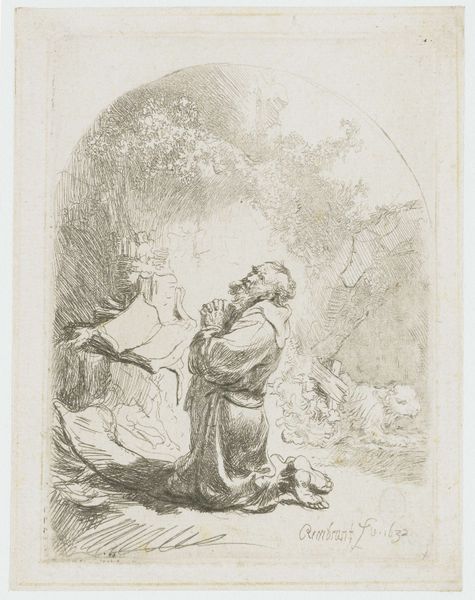
print, engraving
#
portrait
#
baroque
# print
#
pen illustration
#
old engraving style
#
landscape
#
figuration
#
engraving
Dimensions: height 135 mm, width 85 mm
Copyright: Rijks Museum: Open Domain
Curator: Welcome. Here we have “Didymus de Blinde,” an engraving created after 1636, attributed to Frederick Bloemaert, currently residing at the Rijksmuseum. Editor: My first impression? There is such starkness to this Baroque print, a certain austerity. It presents an elderly, cloaked figure juxtaposed with a rather unsettling gathering of creatures, set against a simple landscape. Curator: Indeed. The composition immediately draws the eye to the figure's elongated form, subtly bent as if under a weight—both literal and perhaps symbolic. Note the intricate etching technique used to delineate the figure and the landscape behind him, employing contrasting shades to achieve depth and texture. Editor: I’m drawn to the textures Bloemaert achieves, though I wonder about the economics and skill involved. The fine lines of the engraving imply specialized tools and skilled labor. One imagines a workshop setting, with the master craftsman guiding assistants in the laborious process. It suggests a complex interplay between artisanal practice and the emerging market for printed images at the time. Curator: That attention to craft allows for complex contrasts. Observe how light interacts with the figure’s garment; the deep folds creating dramatic shadow. Consider, too, the overall sense of melancholic isolation emphasized by the spare setting and figure’s averted gaze. The landscape is stark. The artist carefully balanced each shape, guiding our focus from the lower bestial scene toward a distant vanishing point, creating a contemplative mood. Editor: And these seemingly grotesque animals around his feet—the turtles and birds. Are they simply props or symbolic participants in some way, signifying vice or perhaps symbols linked to the portrayed individual's beliefs and context? They seem integral to the construction of his persona, elevating the engraving from mere portraiture. I am curious, also, as to how such a seemingly simple image speaks to class and access, a commodity acquired and circulated at a specific historical moment. Curator: Yes, considering how all the individual elements come together. A narrative is woven through the skilled use of chiaroscuro and carefully orchestrated spatial relationships. What one truly carries away is this piece’s uncanny ability to conjure emotional resonance through purely formal means. Editor: True. It forces one to think beyond pure aesthetics and contemplate both its historical journey and material reality, where cultural production, and meaning, intersect.
Comments
No comments
Be the first to comment and join the conversation on the ultimate creative platform.
